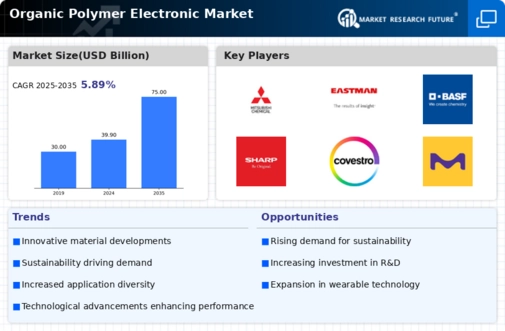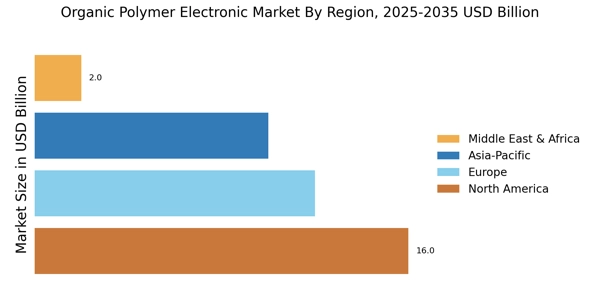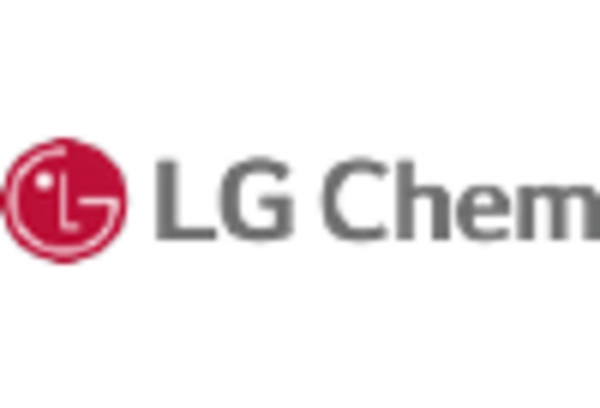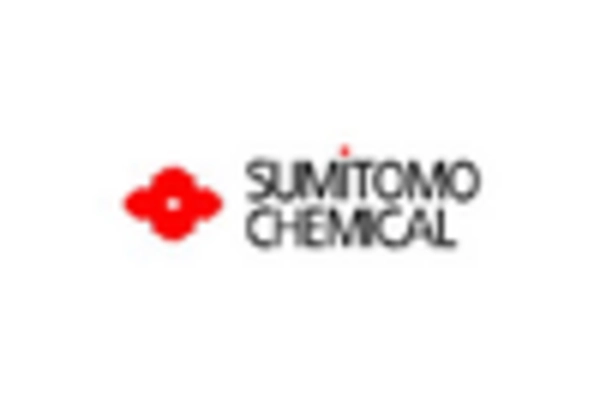Technological Innovations
Technological advancements are reshaping the landscape of the Organic Polymer Electronic Market. Innovations in material science have led to the development of high-performance organic polymers that exhibit superior electrical properties. For instance, the introduction of new conductive polymers has enabled the creation of flexible and lightweight electronic devices, which are increasingly sought after in various applications. The market is witnessing a surge in investment, with projections indicating a compound annual growth rate of around 15% over the next five years. This growth is fueled by the integration of organic polymers in consumer electronics, wearables, and smart devices. As technology continues to evolve, the Organic Polymer Electronic Market is likely to experience further expansion, driven by the demand for advanced electronic solutions.
Sustainability Initiatives
The increasing emphasis on sustainability is a pivotal driver for the Organic Polymer Electronic Market. As consumers and manufacturers alike prioritize eco-friendly materials, organic polymers are gaining traction due to their biodegradable properties. This shift is reflected in the market, where the demand for sustainable electronic components is projected to grow significantly. In 2025, the market for organic polymers is expected to reach a valuation of approximately 10 billion USD, driven by their reduced environmental impact compared to traditional materials. Companies are investing in research and development to enhance the performance of these materials while maintaining their eco-friendly attributes. This trend not only aligns with The Organic Polymer Electronic Industry as a leader in environmentally responsible innovation.
Diverse Application Spectrum
The versatility of organic polymers is a significant driver for the Organic Polymer Electronic Market. These materials are being utilized across a wide range of applications, including displays, sensors, and photovoltaic cells. The adaptability of organic polymers allows for their integration into various electronic devices, enhancing functionality and performance. In recent years, the market has seen a notable increase in the adoption of organic light-emitting diodes (OLEDs), which leverage the unique properties of these polymers. The market for OLED technology is expected to surpass 30 billion USD by 2026, indicating a robust demand for organic polymers in display technologies. This diverse application spectrum not only broadens the market's reach but also solidifies the position of the Organic Polymer Electronic Market as a key player in the electronics sector.
Government Support and Regulations
Government initiatives and regulations are playing a crucial role in shaping the Organic Polymer Electronic Market. Many countries are implementing policies that promote the use of sustainable materials in electronics manufacturing. This regulatory support is encouraging companies to invest in organic polymer technologies, as compliance with environmental standards becomes increasingly important. For instance, incentives for research and development in green technologies are fostering innovation within the industry. The market is expected to benefit from these supportive measures, with an anticipated growth rate of 12% annually over the next five years. As governments continue to advocate for sustainable practices, the Organic Polymer Electronic Market is likely to thrive, driven by both regulatory compliance and consumer demand for eco-friendly products.
Consumer Demand for Lightweight Electronics
The rising consumer preference for lightweight and portable electronic devices is a significant driver for the Organic Polymer Electronic Market. As technology advances, consumers are increasingly seeking devices that are not only functional but also easy to carry. Organic polymers, known for their lightweight characteristics, are becoming the material of choice for manufacturers aiming to meet this demand. The market for portable electronics is projected to grow at a rate of 10% annually, with organic polymers playing a pivotal role in this transformation. This trend is particularly evident in the production of smartphones, tablets, and wearable devices, where weight reduction is critical. As manufacturers continue to innovate, the Organic Polymer Electronic Market is poised to capitalize on this consumer trend, enhancing the appeal of their products.

















Leave a Comment